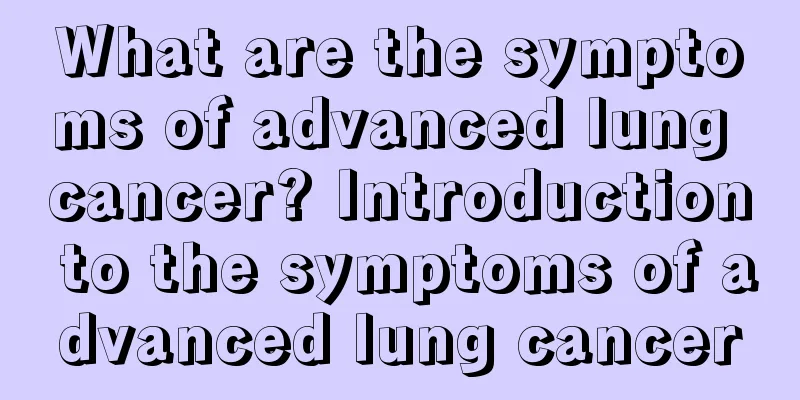Indications for cardiopulmonary resuscitation

|
I believe that many people do not know the treatment targets and treatment objectives of cardiopulmonary resuscitation. In order to increase everyone's understanding of this treatment method, it is recommended that you read the following content. Cardiopulmonary resuscitation is mainly used to treat the symptoms of fainting. It delivers oxygen to the lungs artificially and combines it with external cardiac massage to promote the exchange of oxygen from the lungs. It is a good treatment for promoting heartbeat. Principles of CPR The air contains 80% nitrogen, 20% oxygen and trace amounts of other gases. Chemical analysis of the air exhaled by the human body shows that nitrogen still accounts for about 80%, while oxygen has dropped to 16% and carbon dioxide accounts for 4%. This analysis allows us to understand that the amount of oxygen in the air exhaled through normal breathing is still sufficient to meet our normal needs. Artificial respiration is used to blow air into the lung cavity, and then combined with external cardiac massage to encourage blood to exchange oxygen from the lungs and then circulate to the brain and the whole body to maintain the survival of brain cells and organ tissues. Importance of CPR The human body relies on the beating of the heart, the rhythmic movement of blood vessels and the breathing of the lungs to transport oxygen and nutrients to all parts of the body for normal body activities; and expel carbon dioxide and waste from the body through blood flow and breathing. Under normal circumstances, if the heart stops beating, that is, the brain tissue is deprived of oxygen within 4 minutes, the original function can be restored. If the heart stops beating for more than 4 minutes, it is easy to cause permanent damage to the brain tissue and even lead to death. Therefore, rescue of such wounded persons must be timely and rapid, so as to try to save their lives. Indications and contraindications for cardiopulmonary resuscitation 1. Indications Respiratory and circulatory arrest due to various reasons (including cardiac arrest, ventricular fibrillation and extremely weak heartbeat) 2. Contraindications Open chest wall injury; rib fracture; chest deformity or pericardial tamponade. Medical education: Patients with irreversible failure of important organs such as heart, lung, and brain do not need resuscitation, such as advanced cancer. Steps of CPR 1. Judgment awareness Pat the patient's shoulders with both hands and call the patient to observe whether there is any response. 2. Call for help Immediately call other medical personnel for rescue and bring a defibrillator. 3. Determine heartbeat and breathing Lift the quilt, unbutton the outer clothes, touch the carotid artery, and observe the rise and fall of the chest to determine the heartbeat and breathing conditions. If the heart stops beating or breathing stops, perform cardiopulmonary resuscitation immediately and record the start time of rescue. 4. Chest compressions ① Preparation: Move the bedside table away, quickly let the patient lie flat without a pillow, place a pressure board under the chest, and use a footstool as a footrest. ②30 chest compressions (17 seconds to complete): A. Location: The midpoint of the line connecting the two nipples or two horizontal fingers above the xiphoid process B. Technique: Use the method of overlapping your hands, straighten your wrists and elbows, and use your body gravity to press vertically downward. C. Depth: sternum depression ≥ 5cm D. Frequency: ≥100 times/min 5. Open the airway ①Clear the respiratory tract: Turn the patient's head to one side and use the right index finger to clean foreign objects in the mouth ② Open the airway: The methods to open the airway include lying on the back with the chin lifted and jaw lifted. The commonly used supine chin-lift method is that the rescuer places the hypothenar of his left hand on the patient's forehead and presses the palm backwards to make the head tilt back. The middle finger and index finger of his right hand are separated in a scissors shape and placed under the patient's chin and lifted upwards to straighten the airway. It is forbidden for patients with neck injuries to avoid damaging the spinal cord. 6. Artificial respiration Use a simple respirator to ventilate twice, use the "EC technique", perform artificial respiration once every 6-8 seconds, 8-10 times/minute, each breath is about 1 second, ventilation is about 0.5 liters, and the chest can be seen rising and falling. 7. Continue CPR Continue cardiopulmonary resuscitation with a ratio of chest compression to artificial respiration of 30:2, and repeat this method repeatedly until recovery is achieved. 8. Observe the effective signs of cardiopulmonary resuscitation ①Observe the heartbeat and breathing: touch the carotid artery (10 seconds) and observe the breathing. ② Observational awareness: observe pupil changes, orbital pressure reaction, and light reflex. ③Observe circulation: observe changes in cyanosis of the face, lips, and nail beds, improvements in peripheral circulation, and measure blood pressure. ④ Determine whether resuscitation is successful: continue to provide advanced life support. |
<<: What to do if herpes appears around the mouth
Recommend
What are the hazards of common teratomas
What are the hazards of common teratomas? Teratom...
What is the reason for the eyes to twitch
When the eyelids twitch, many people have superst...
6 major effects of enzymes on women's health
1. Enzymes and breast hyperplasia Environmental p...
7 Reasons Men Must Eat Beef
1. Beef is rich in creatine The creatine content ...
What to do if you have severe stomach problems and vomiting
Gastric disease is a general term. There are many...
How to do color Doppler ultrasound without holding urine
Color ultrasound is a common examination method. ...
What's the matter with allergic redness at the corners of the mouth
Generally speaking, when any discomfort appears o...
What diseases of the esophagus are likely to cause esophageal cancer?
Esophageal cancer mostly occurs in people over 40...
How can uterine cancer be diagnosed?
In our clinical medicine, each disease has its re...
How long does it take to thaw steak
Steak is a very delicious Western food. After it ...
What is the relationship between eyes and the five internal organs?
Eyes are the most important organs of human being...
What are the methods for treating colorectal cancer
Colorectal cancer is a common tumor in my country...
The skin on my body is dry like fish scales
There are many types of skin diseases with differ...
What are the ingredients of rice washing water
Rice washing water is the water left after washin...
There are many warts on the neck
The growth of many warts on the neck is a very co...









